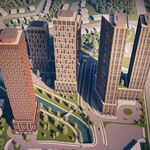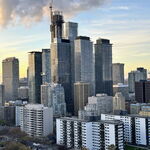Blue moon?
The TTC has six instances of shuttles on Line 1 scheduled just for the month of May. Those six instances run across 19 total days of the next 24.
The Toronto Transit Commission is the quick, convenient and safe way to get around Toronto. The subway system is linked with buses and streetcars to get you around Toronto on one fare, provided it's a one-way trip with no stopovers. You can travel on the TTC every day.

www.ttc.ca
In my experience they have 1-2 unscheduled instances per week. That would add 7 more by month's end for 31 instances of requiring shuttle buses in a 24 day period.
Its also chaotic as it is, when it happens. I was stuck in one the other day at Bloor-Yonge at 7pm. It took almost 20m to get any shuttle buses on scene, about 7m to get staff on scene, no clear identification of where the stop was to be; buses having to compete w/traffic.....the sidewalks were clogged to overflowing.........
I don't think directing people to walk 2 extra blocks to a street that does not run parallel to Yonge north of Bloor is all that workable.
Keep in mind it takes 20 conventional buses to replace a single train set in terms of crush load capacity. For a delay of any length, this means running no less than 60 buses over a short distance.






